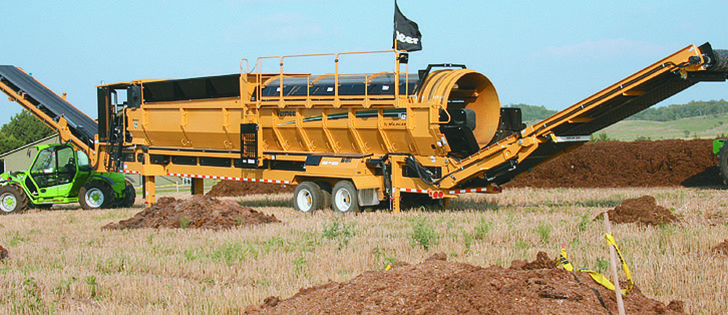GUELPH, Ont. — When it comes to managing dry manure, it’s hard to beat the armoury of big guns Vermeer recently brought to the annual Manure Expo in Guelph.
American farmers are finding economic benefits to composting dry manure rather than simply spreading the raw product on their fields, says Ted Dirkx, a recycling solutions specialist with Vermeer.
“Producers are doing a lot more value-added processing of their manure right on the farm,” Dirkx said. “They pile and compost the raw product right on site. After turning and aerating for six to eight weeks, it’s ready to be sold to cash crop farmers or applied to their own fields. A lot of dry composted manure is bagged and sold to garden centres and landscapers.”
Read Also

Europe holds promise for Canadian lentils
Pulse Canada is trying to help boost lentil consumption in Europe, which is already the fourth largest market.
The big dog in the field is the Vermeer HT 600 TX Horizontal Grinder, which at first glance looks like it is being carried on a lowboy flatbed trailer.
However, the HT 600 TX actually is the trailer.
Powered by a 755 horsepower diesel, the grinder is equipped with its own self-propelled set of tracks for on-site manoeuvring. The entire drive system is an undercarriage taken directly from a Caterpillar D5. Most drive systems within the HT 600 TX are hydraulic.
The high speed rotary mill was originally designed to grind pulp wood as a fuel for generating electricity in wooded areas, but is now being used to grind hay, large composting materials and hog, horse and cattle carcasses.
Raw compost material is ready for six to eight weeks of turning and aerating after it comes out the end of the HT 600 TX. Vermeer has a variety of machines dedicated to this process, and brought the popular CT 612 Wildcat to the Guelph show.
“This is the basic machine you need for a composting operation,” Dirkx said.
“It’s necessary to re-introduce oxygen once a week by turning the manure. You need to keep putting those microbes in touch with fresh manure. The CT 612 aerates compost windrows up to six feet high and 12 feet wide in a single pass.”
The third tool in the Vermeer compost kit is the TR520 portable trommel screen. Commercial manure processors who market bagged or bulk manure need a machine such as the TR20 so they can supply clients with the quality of compost they need. Composted manure is loaded into the hopper at the middle of the machine.
The half inch rotating screen is the most common size. Manure a half inch and smaller goes through the screen and is bagged for sale. Large lumps are applied on the field.
For more information, contact Dirkx at 641-628-3141 or visit www.vermeer.com.
















